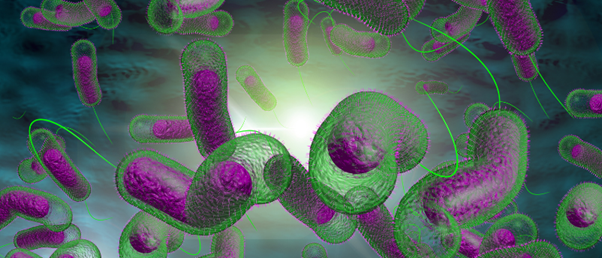
BioTechniques News
Beatrice Bowlby

Researchers find that a type of glycan prevents cholera infection by interfering with the microbe’s gene expression.
Mucus lines most of the moist surfaces in our body and has been found to play a role in controlling microbes in recent years. A new study led by a group at the Massachusetts Institute of Technology (MIT; MA, USA) has found that glycans, a molecule in mucus, can block cholera infection by preventing the Vibrio cholerae microbe from switching to its harmful state. If these glycans can be delivered to the site of infection, it could lead to a novel way of preventing cholera symptoms by strengthening the mucus barrier.
Glycans are a major component of mucin, the polymer that is responsible for mucus’ sticky properties. “Unlike antibiotics, where you can evolve resistance pretty quickly, these glycans don’t actually kill the bacteria,” explained Benjamin Wang, a lead author of the study. “They just seem to shut off gene expression of its virulence toxins, so it’s another way that one could try to treat these infections.”
Previous research has shown that Vibrio cholerae only becomes pathogenic when it’s infected by a virus called CTX phage. “That phage carries the genes that encode the cholera toxin, which is really what’s responsible for the symptoms of severe cholera infection,” Wang explained.
For this ‘toxigenic conversion’ to take place, the CTX phage needs to bind to the toxin co-regulated pilus (TCP), a receptor on the surface of the bacteria. Using a combination of quantitative real-time PCR and western blotting, the researchers found that glycan suppresses the bacteria’s ability to produce this receptor, so the CTX phage cannot bind to it and, therefore, stops the conversion to its harmful state. When Vibrio cholerae was exposed to the glycans, almost none of the cholera toxin was produced, indicating that glycans change the expression of genes required to produce it.
 Reinforcing cervical mucus: an alternative contraception method
Reinforcing cervical mucus: an alternative contraception method
Researchers have developed a topical, non-hormonal gel that can reinforce cervical mucus, acting as a barrier against sperm.
When the epithelial cells that line the gastrointestinal tracts are infected by Vibrio cholerae, they begin to overproduce a molecule called cyclic AMP. This causes them to secrete large amounts of water, leading to diarrhea. The study also found that human epithelial cells exposed to Vibrio cholerae that had been disarmed by glycans did not produce cyclic AMP or start leaking water.
The researchers then investigated which glycan acts on Vibrio cholerae, collaborating with Rachel Hevey’s lab (University of Basel, Switzerland) to create synthetic versions of glycans found in abundance in naturally occurring samples. Most of these glycans had structures known as core 1 or core 2, which differ in the number and type of monosaccharides they contain.
The synthetic glycans revealed that core 2 glycans were most involved in disarming Vibrio cholerae. An estimated 50–60% of people infected with this microbe are asymptotic, and the researchers hypothesized that symptomatic cases could be due to a lack of these specific core 2 cholera-blocking glycans.
Now, the researchers are finding ways to deliver synthetic mucin glycans to infection sites. As glycans cannot attach to mucosal linings alone, researchers are investigating ways of tethering the glycans to polymers or nanoparticles to help them bind.
Katharina Ribbeck (MIT), the senior author, concluded, “We want to learn how to deliver glycans by themselves, but also in conjunction with antibiotics, where you might need a two-pronged approach. That’s our main goal now because we see so many pathogens are affected by different glycan structures.”
The post Glycans block cholera infection appeared first on BioTechniques.
Full BioTechniques Article here
Powered by WPeMatico
